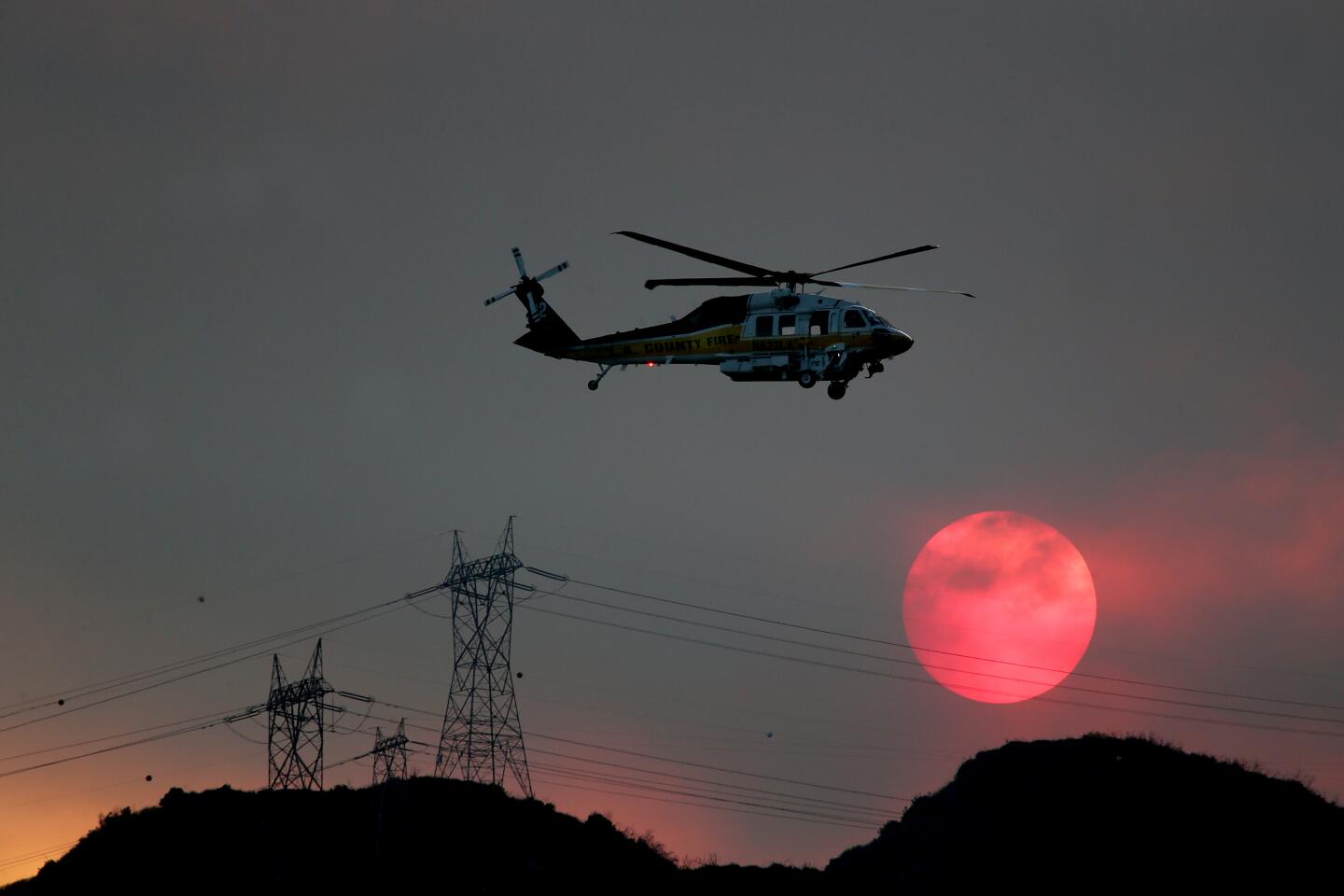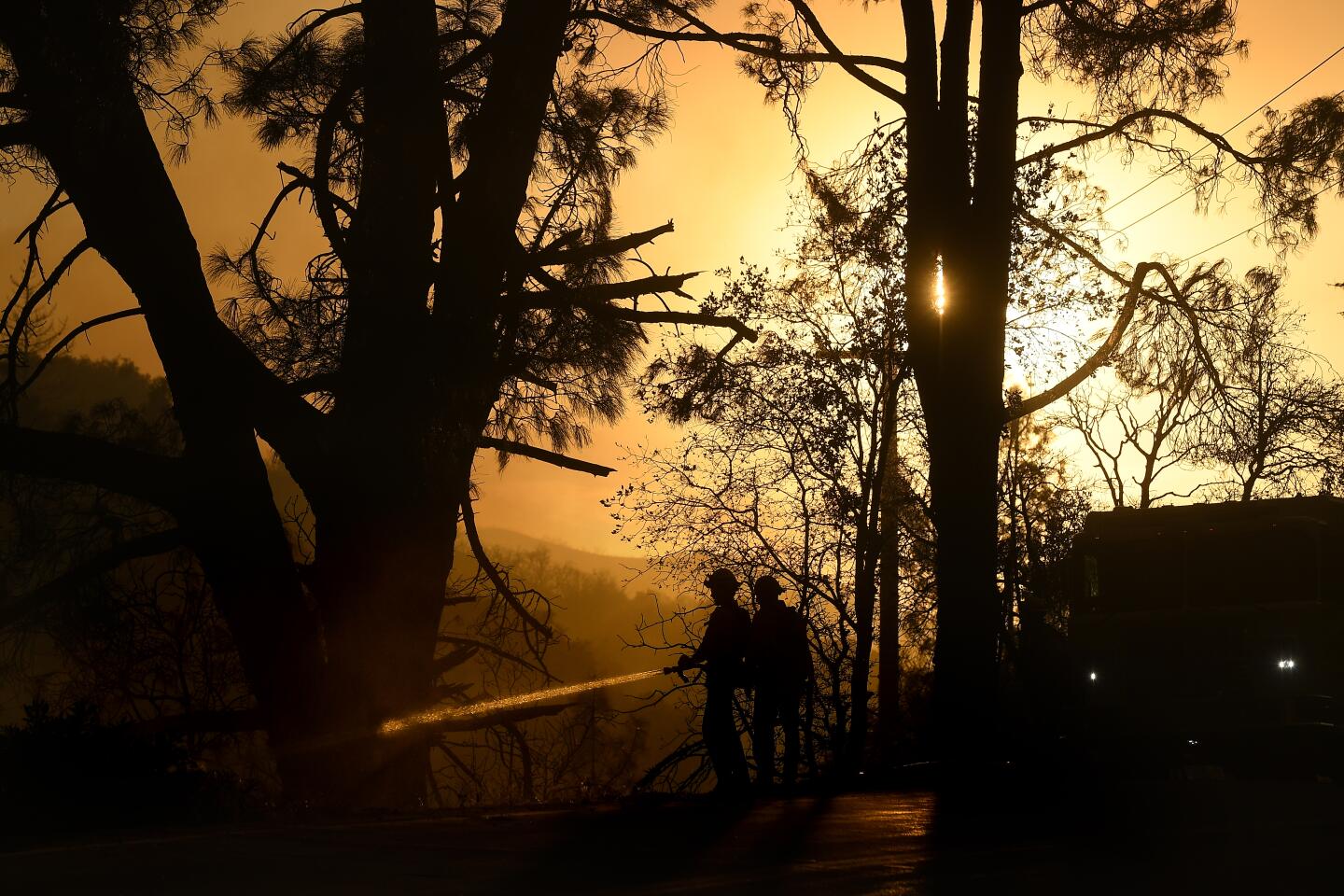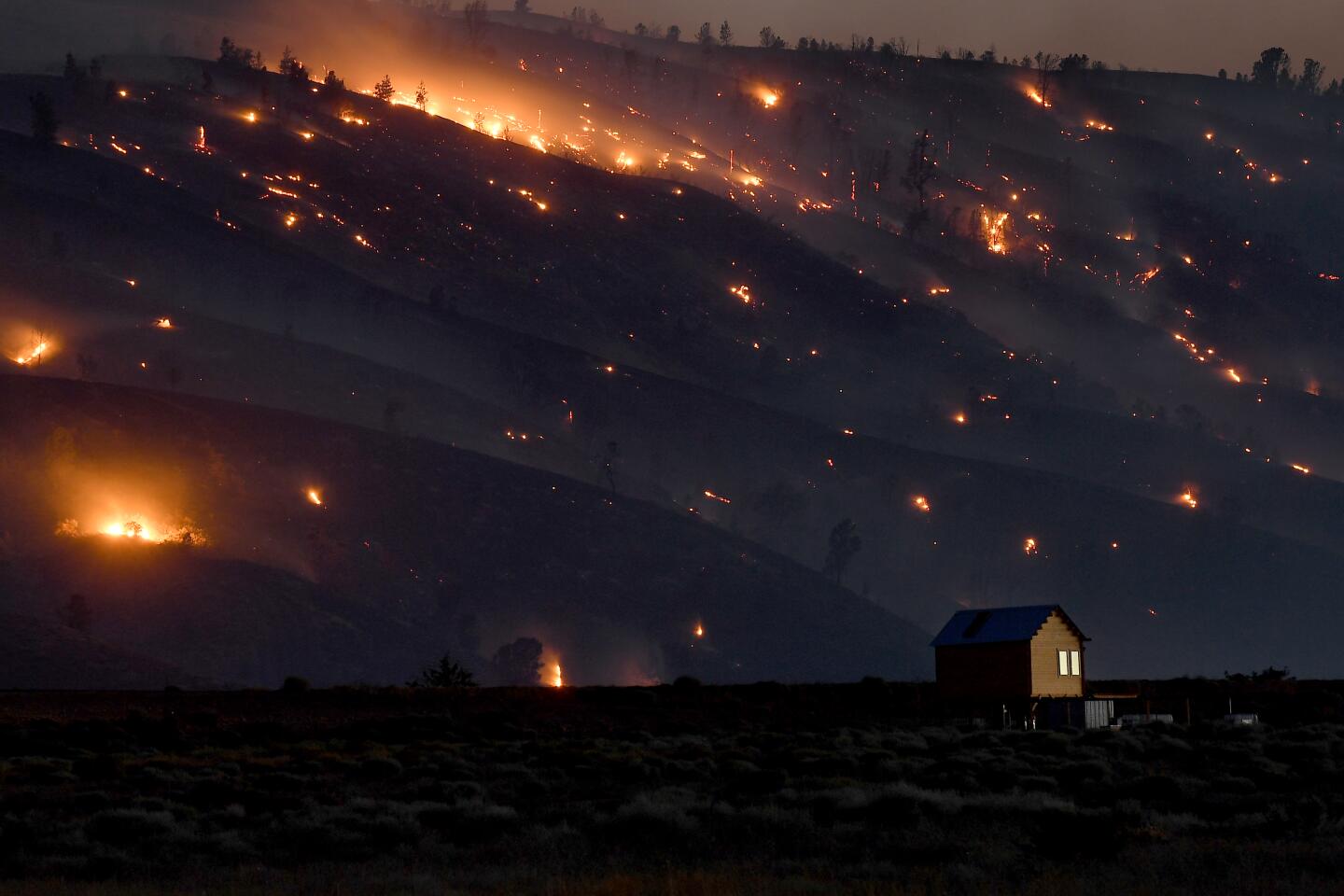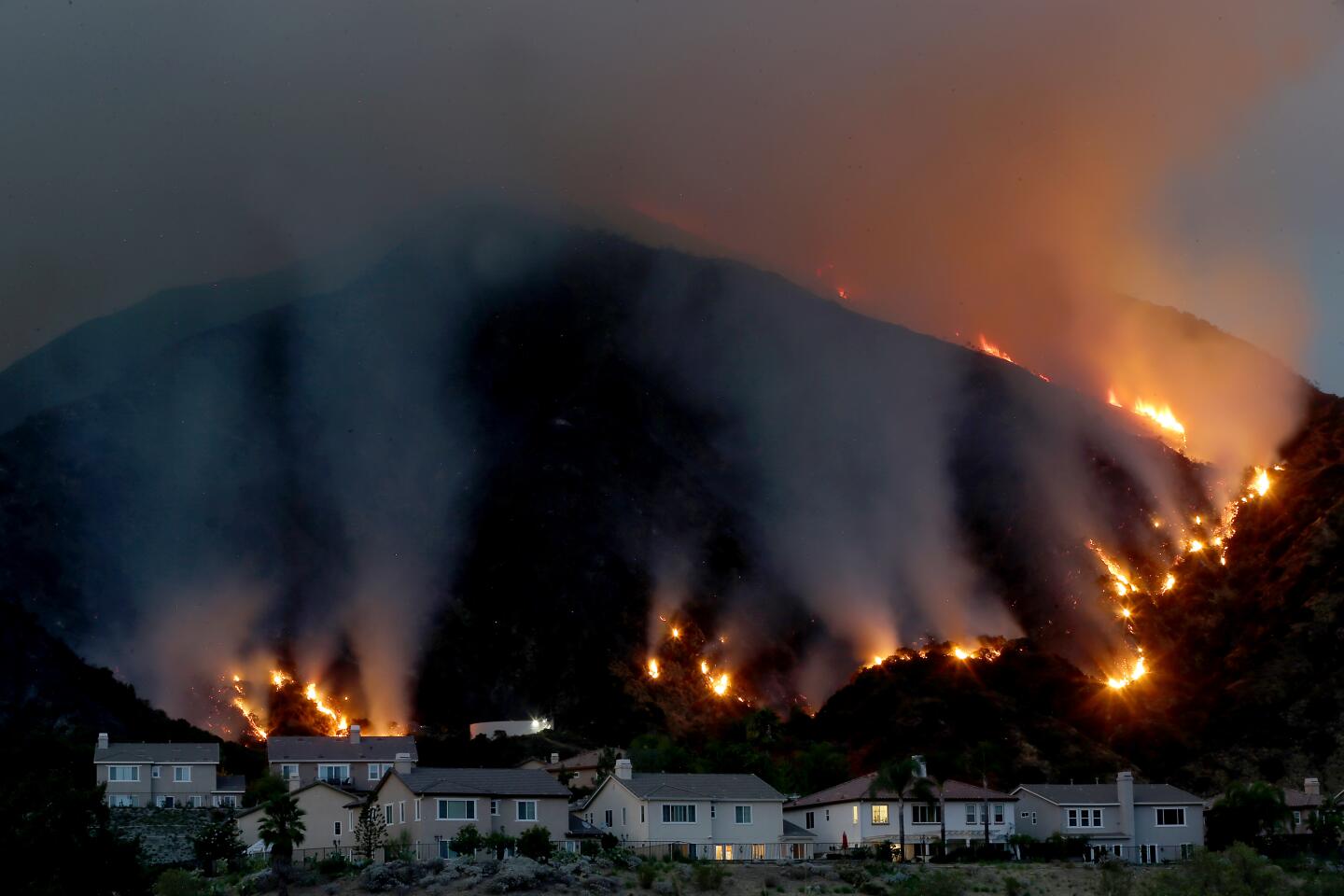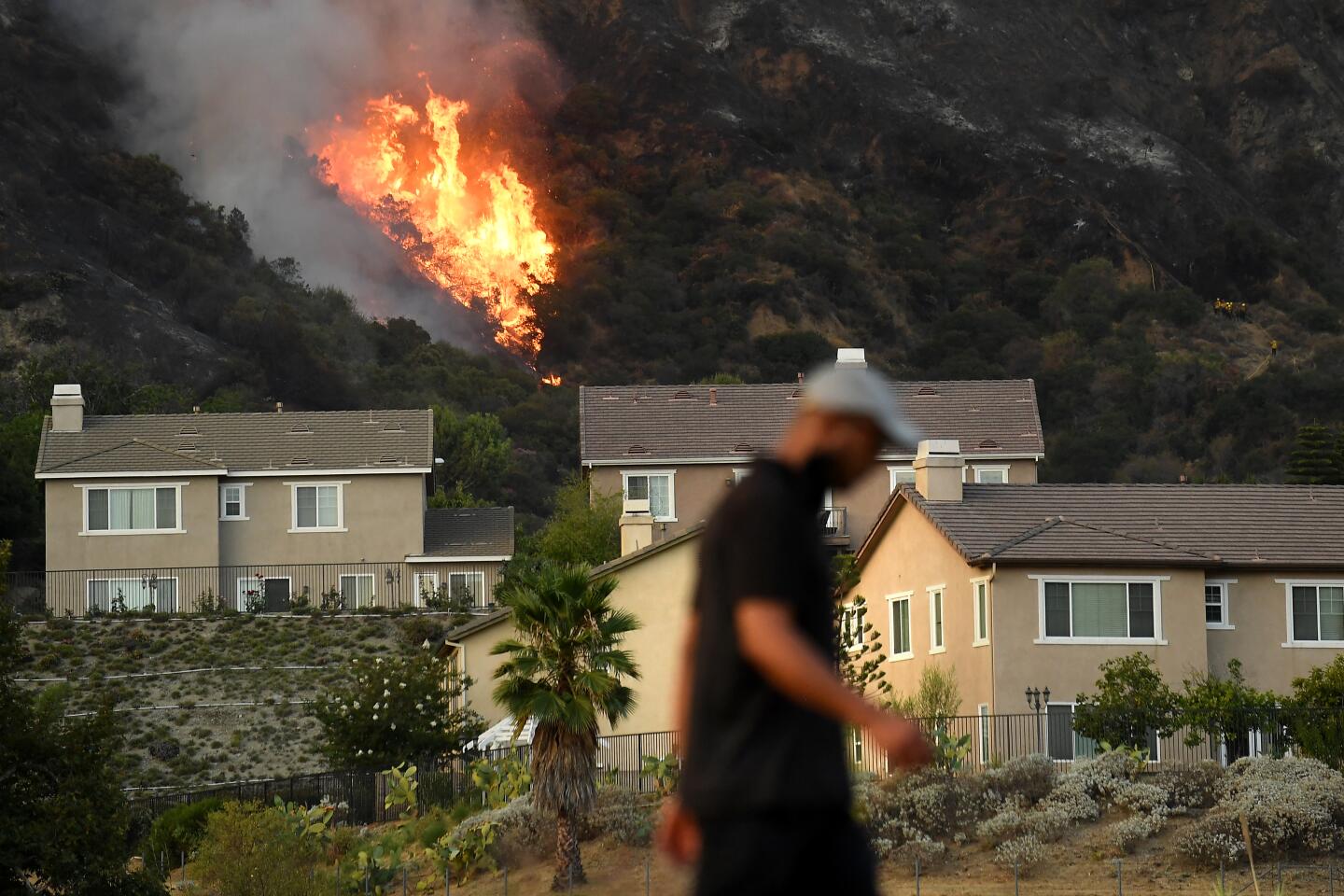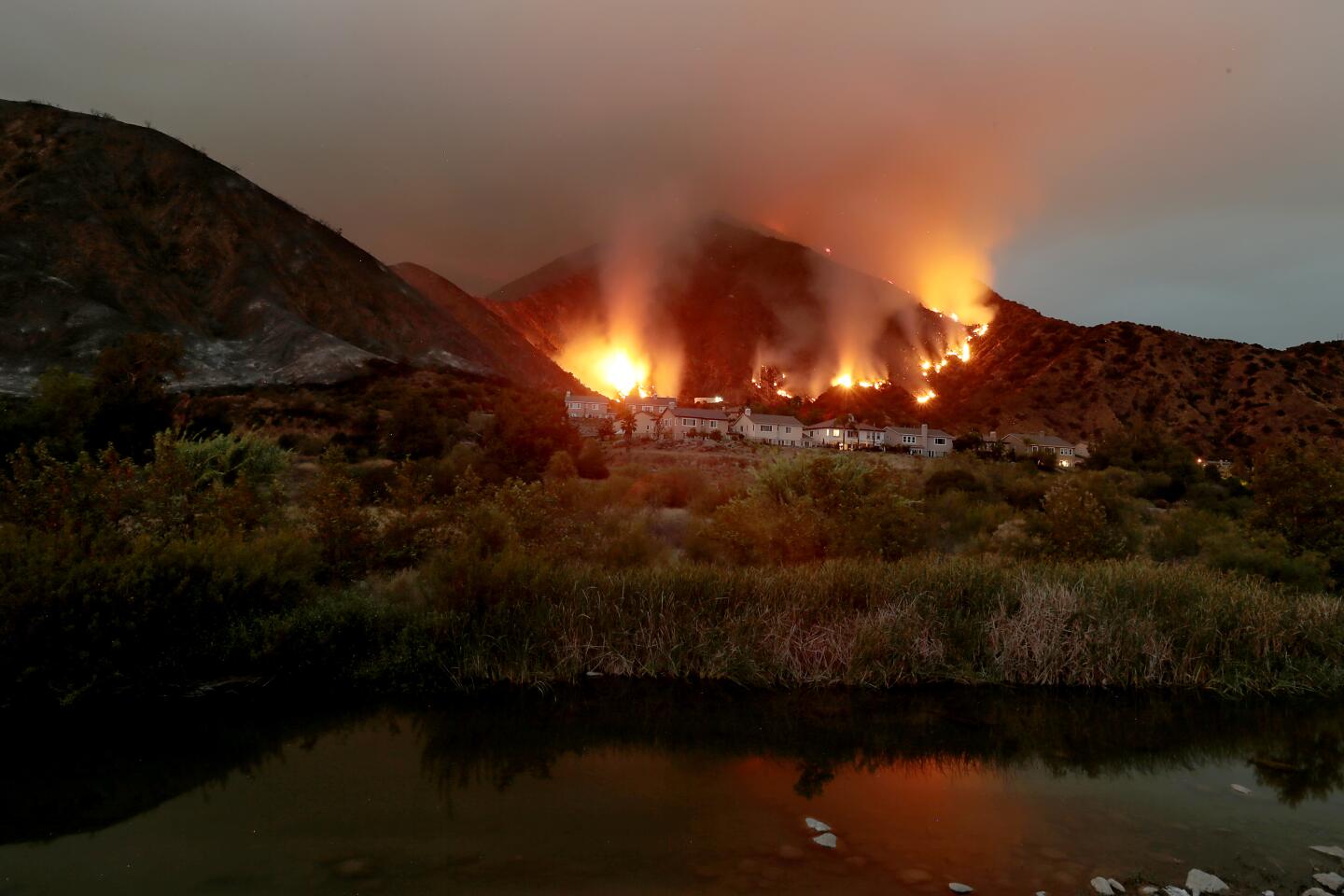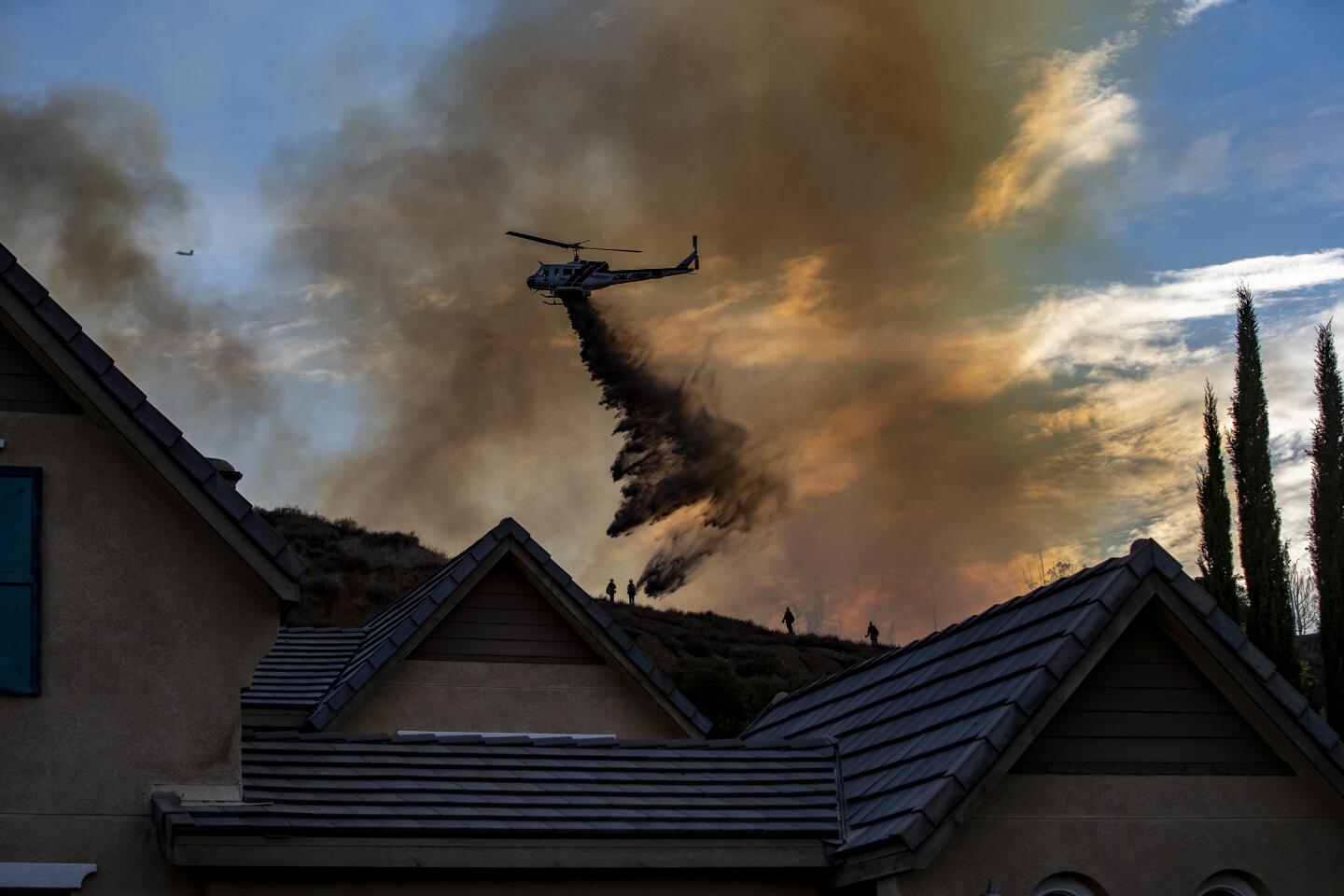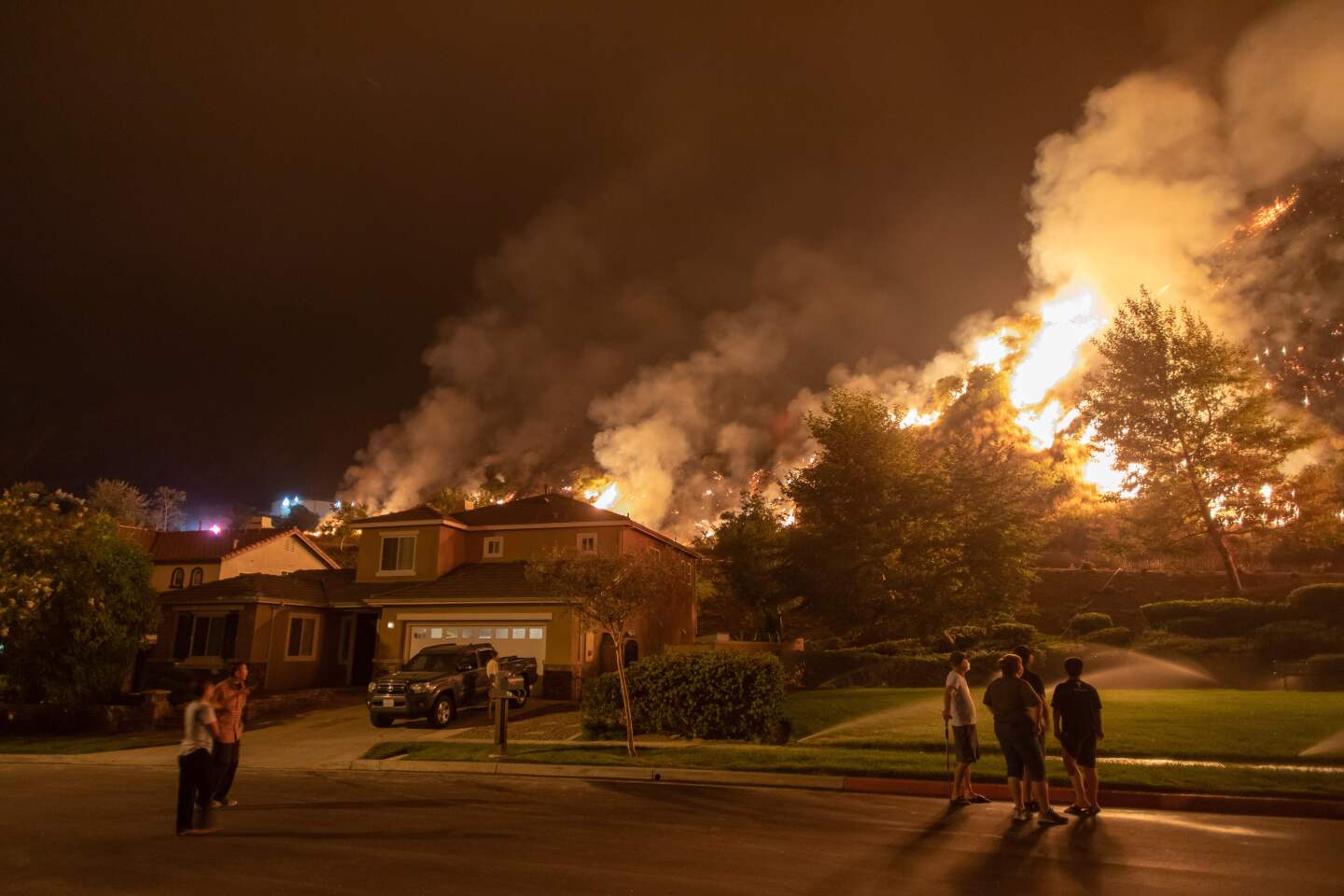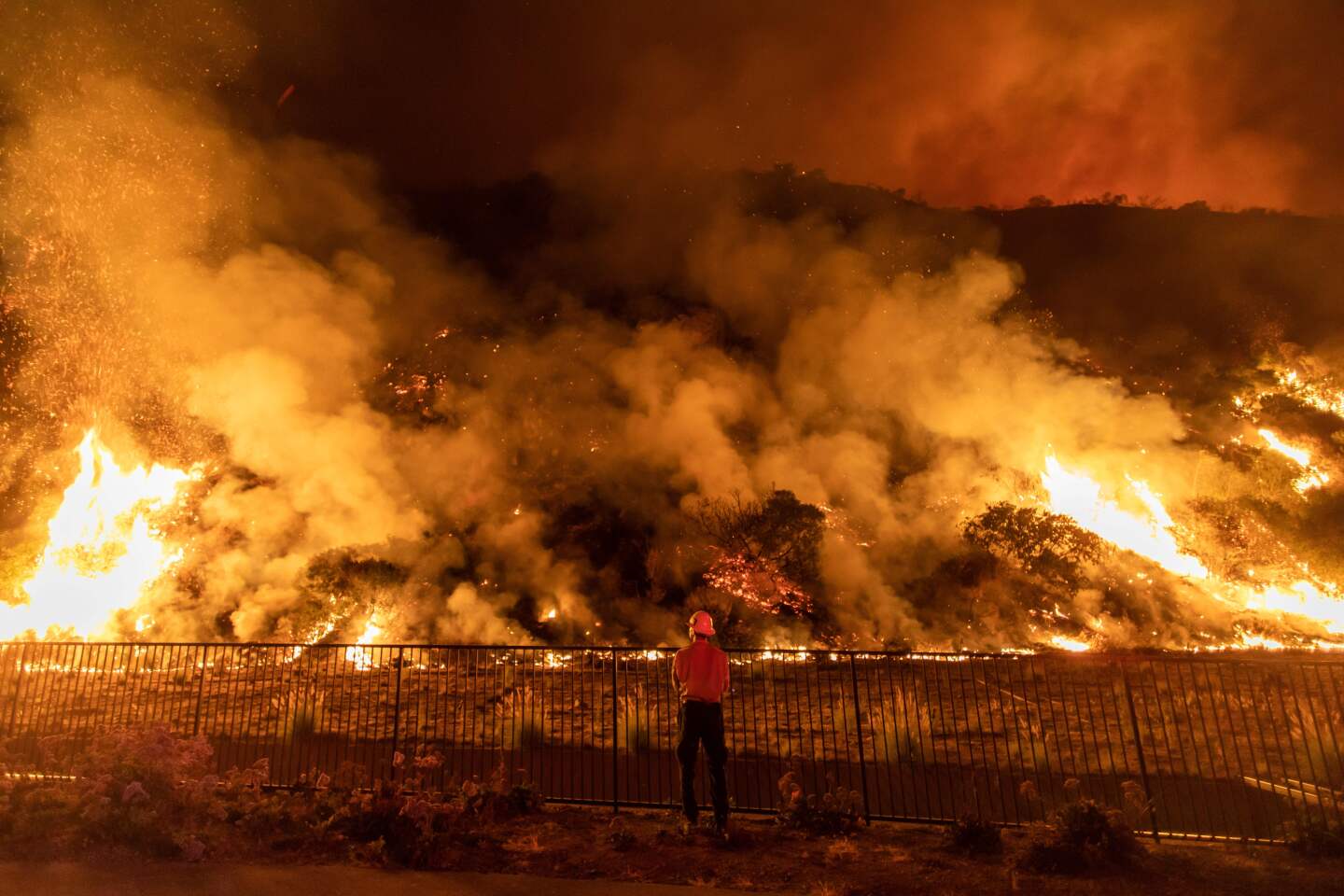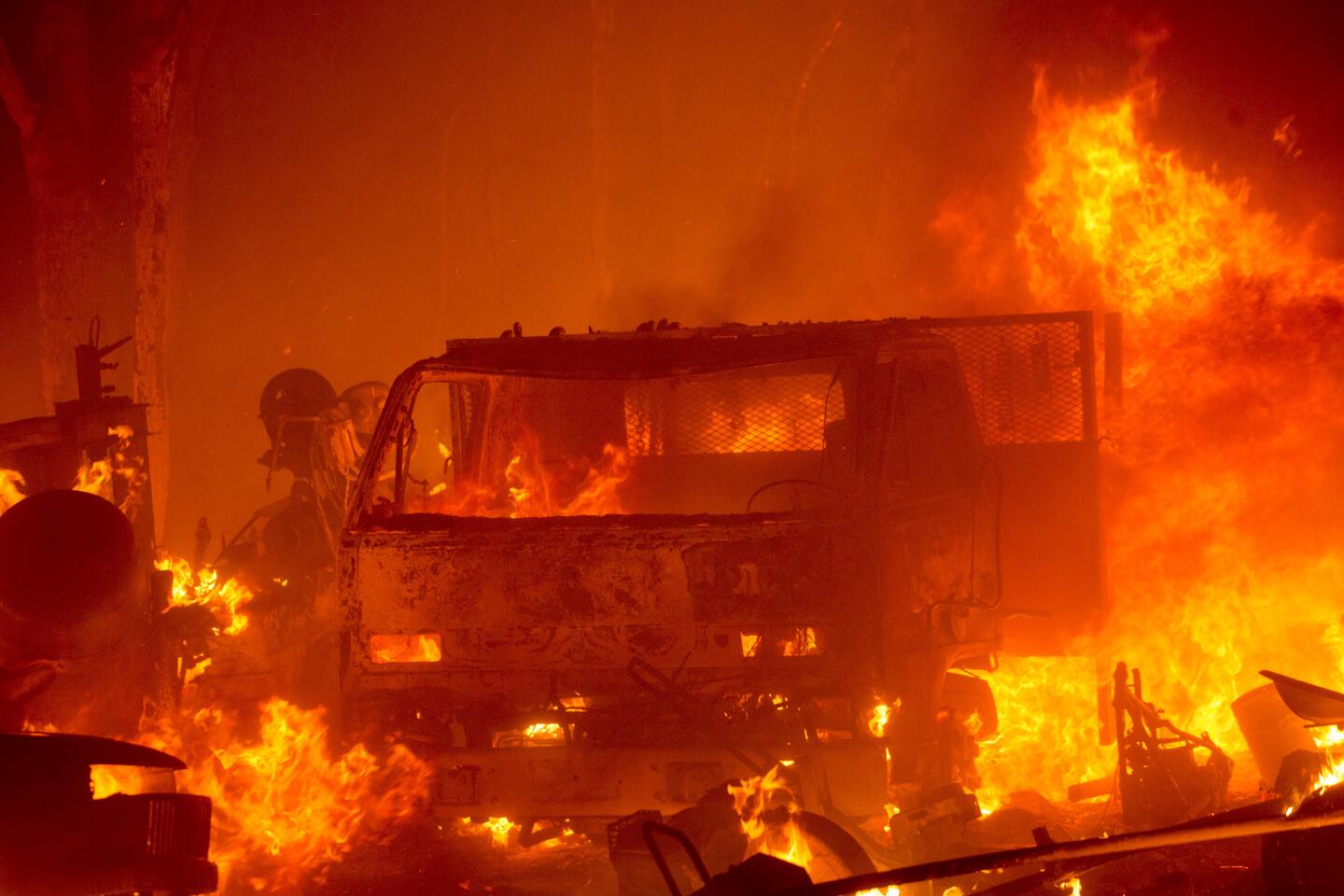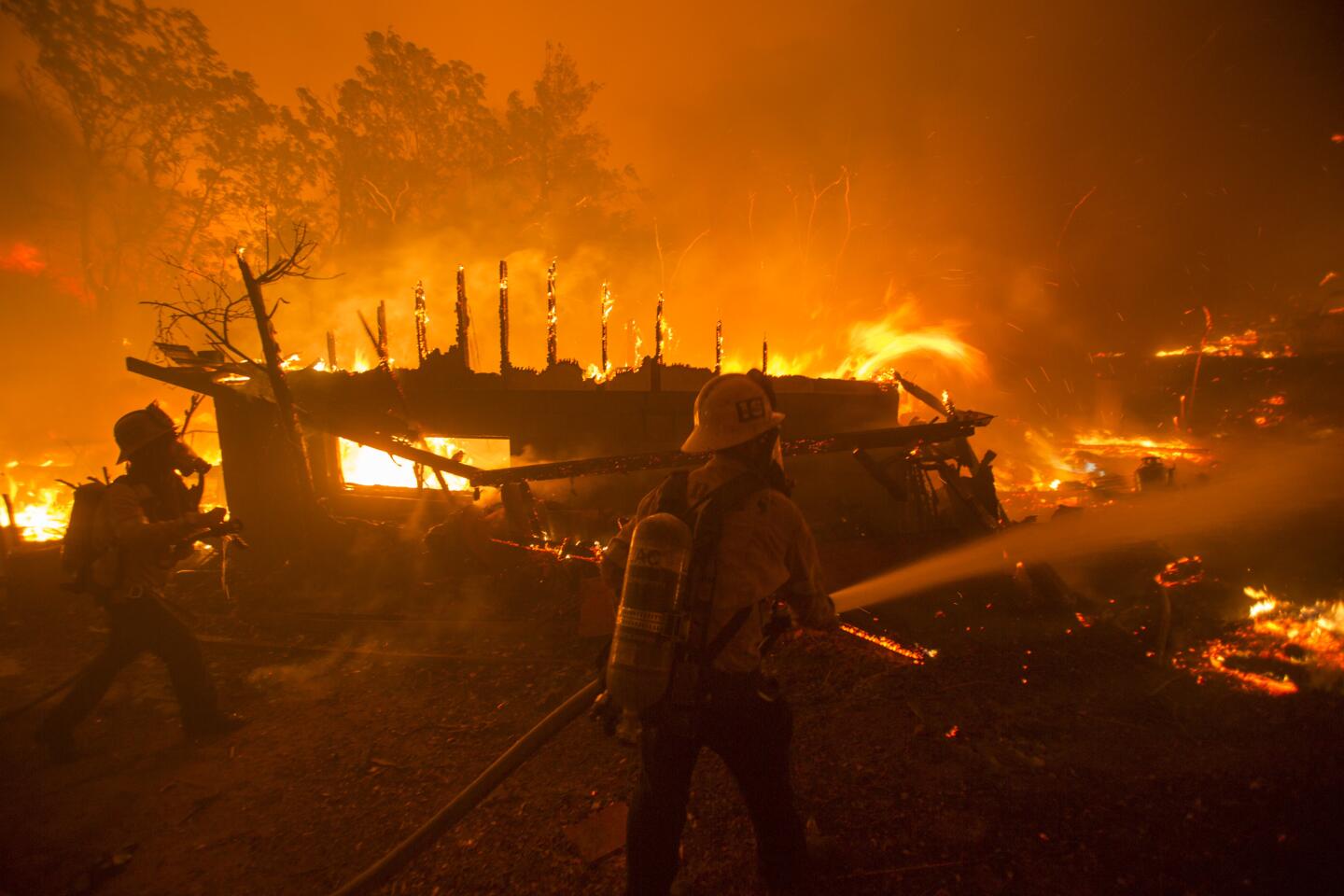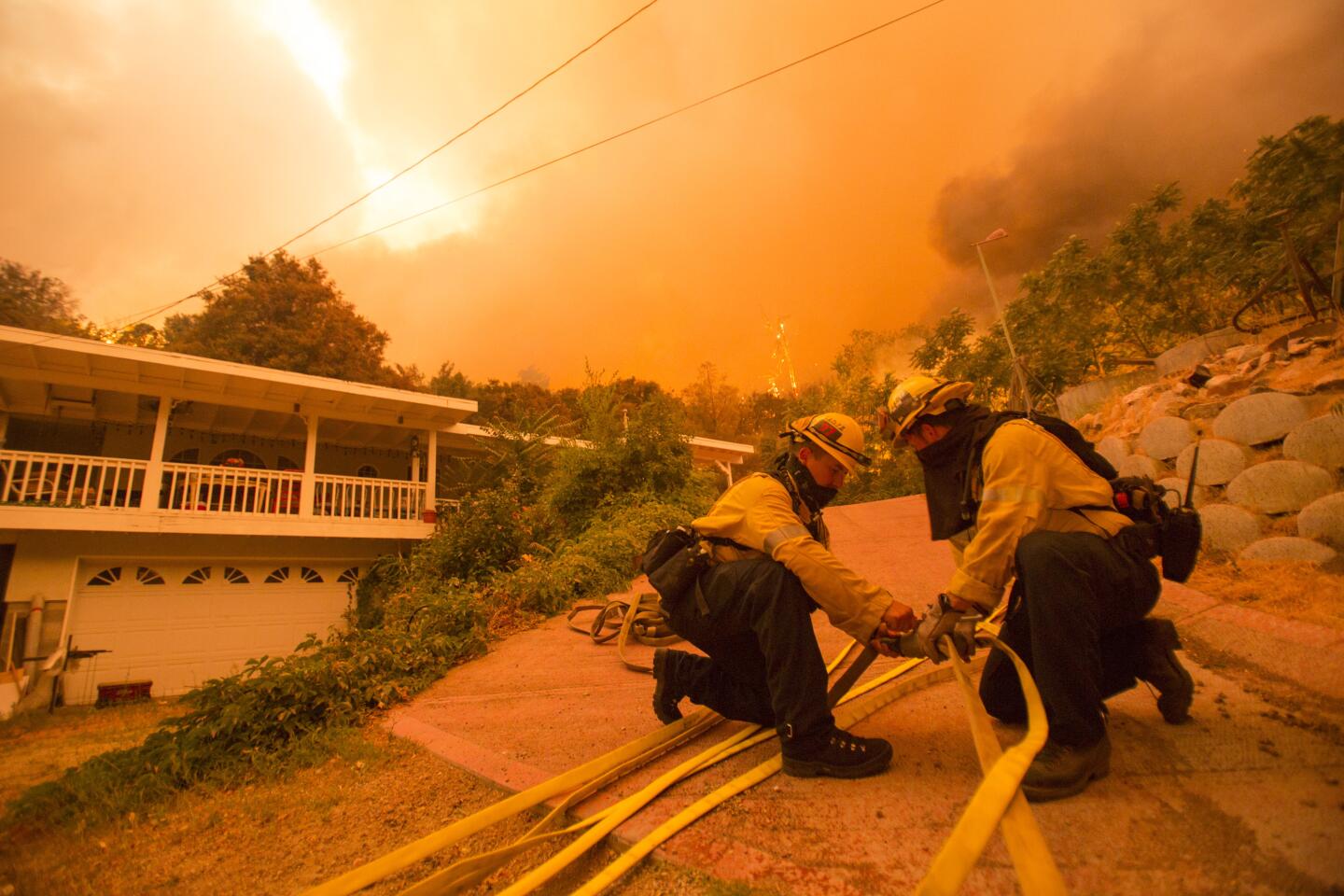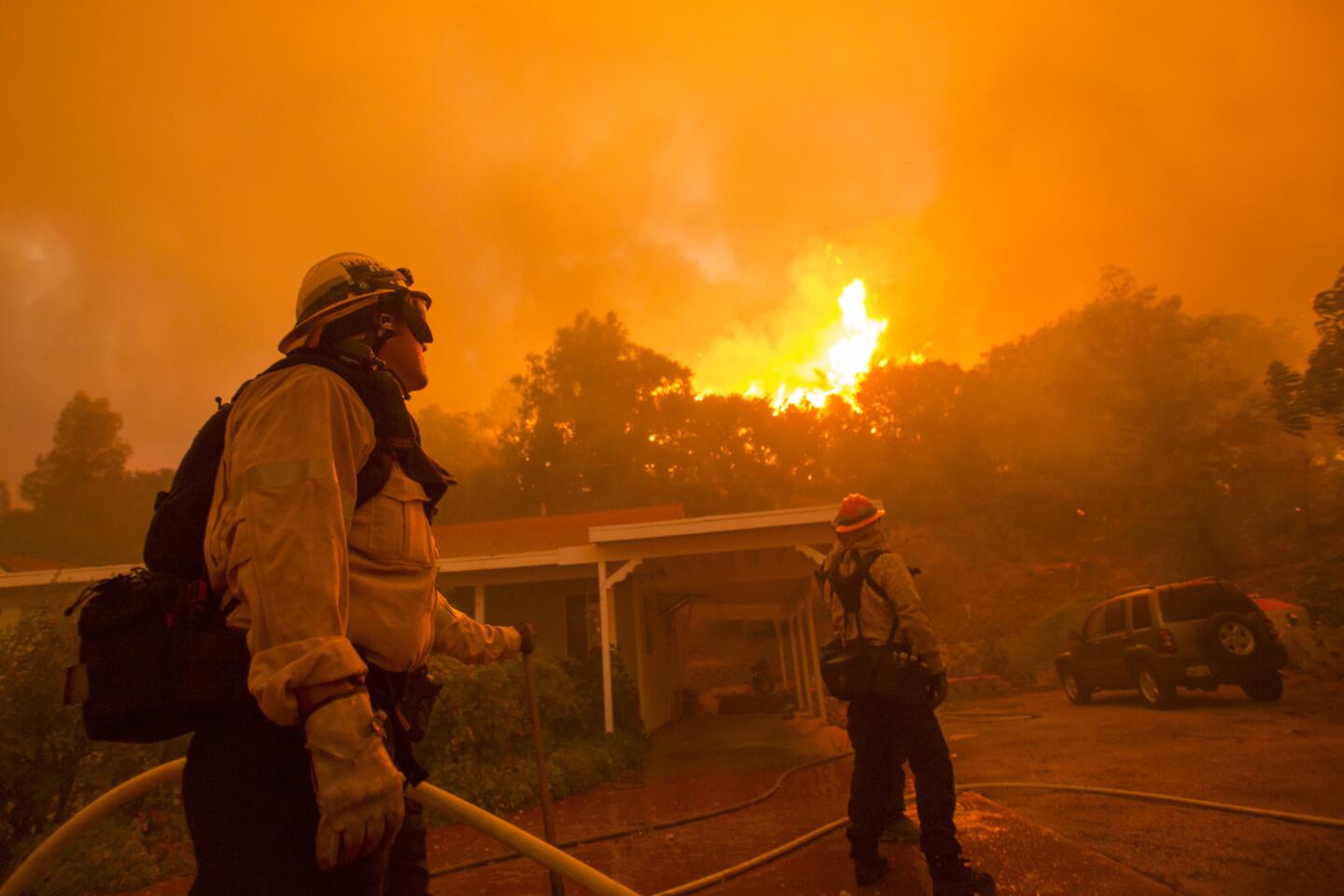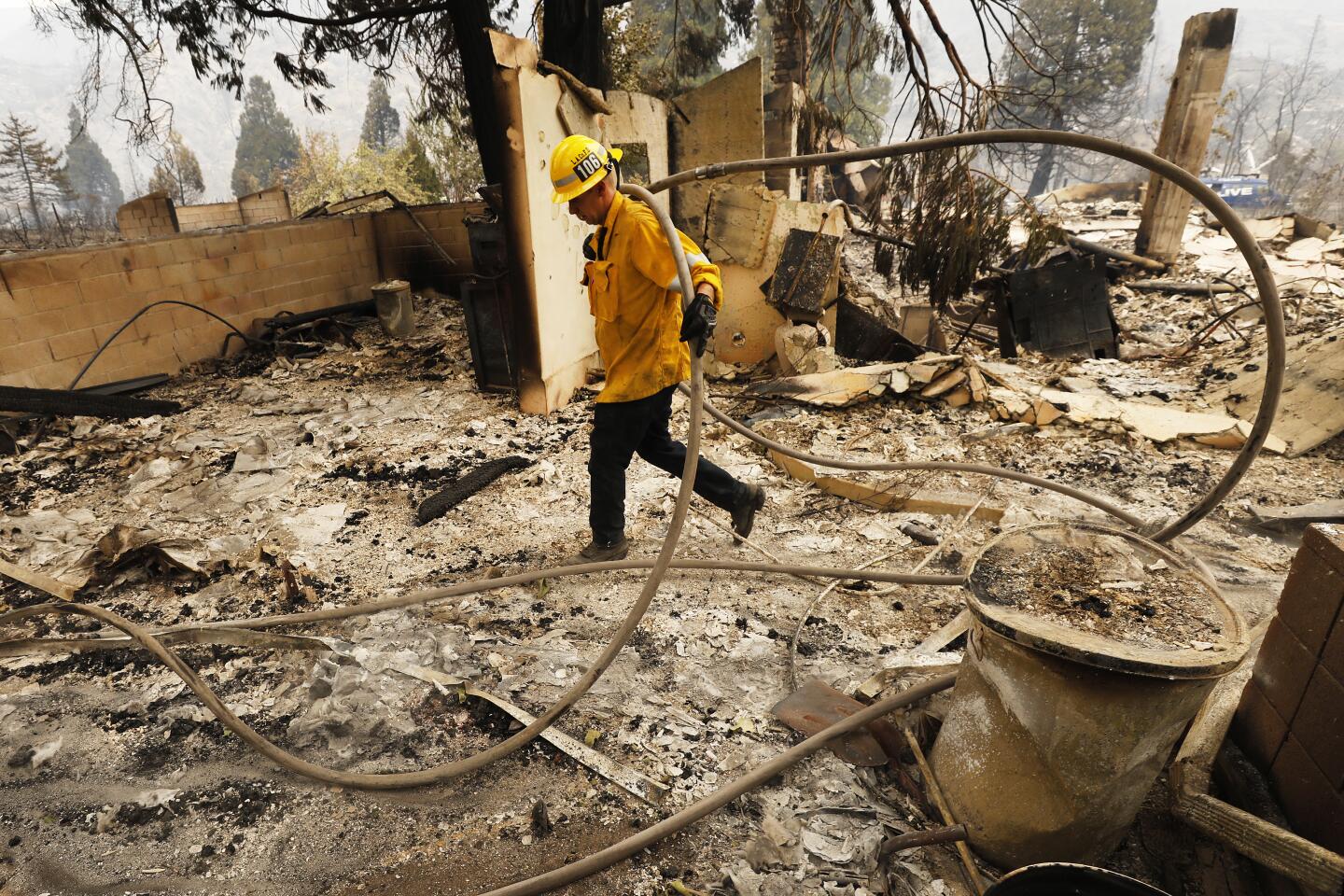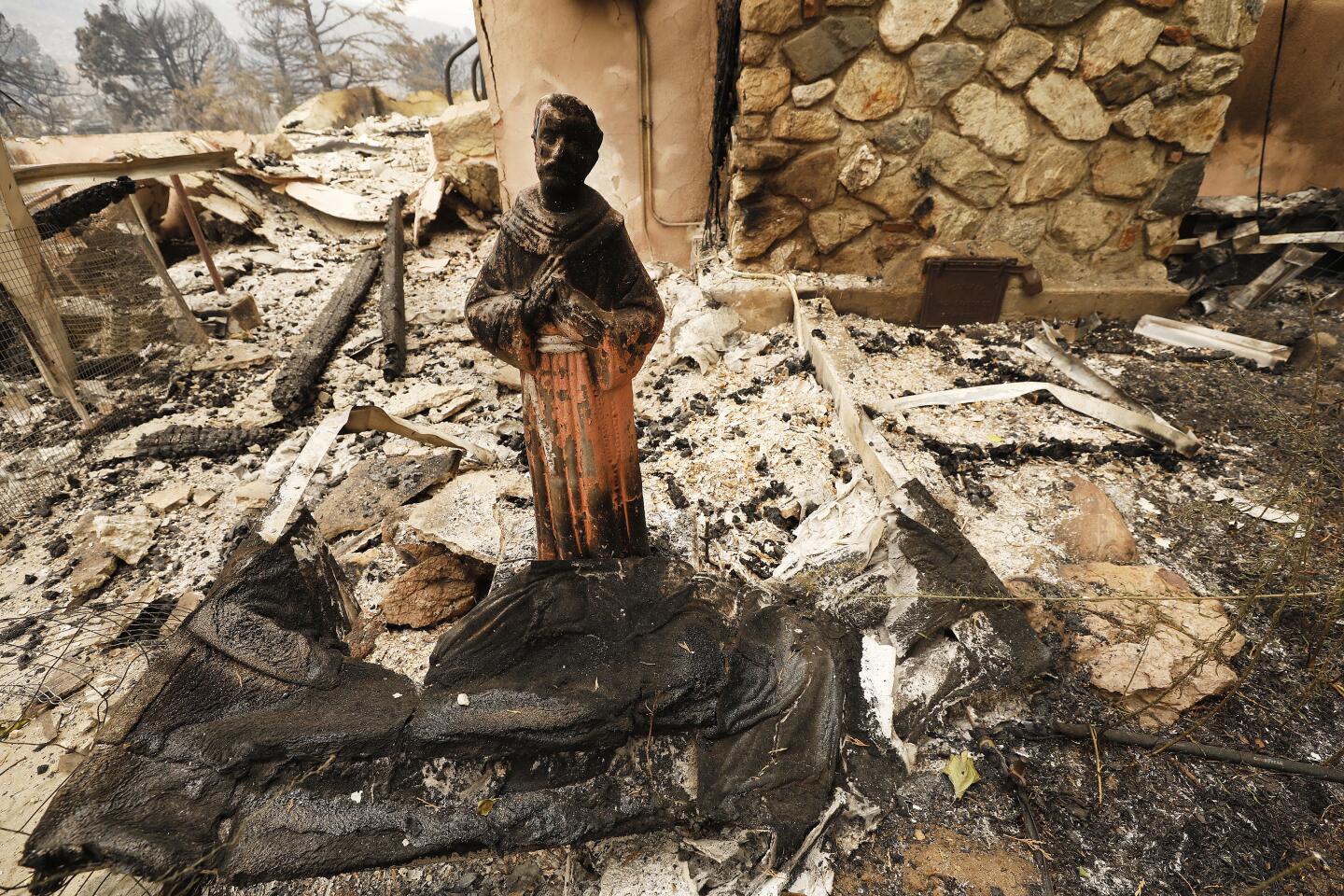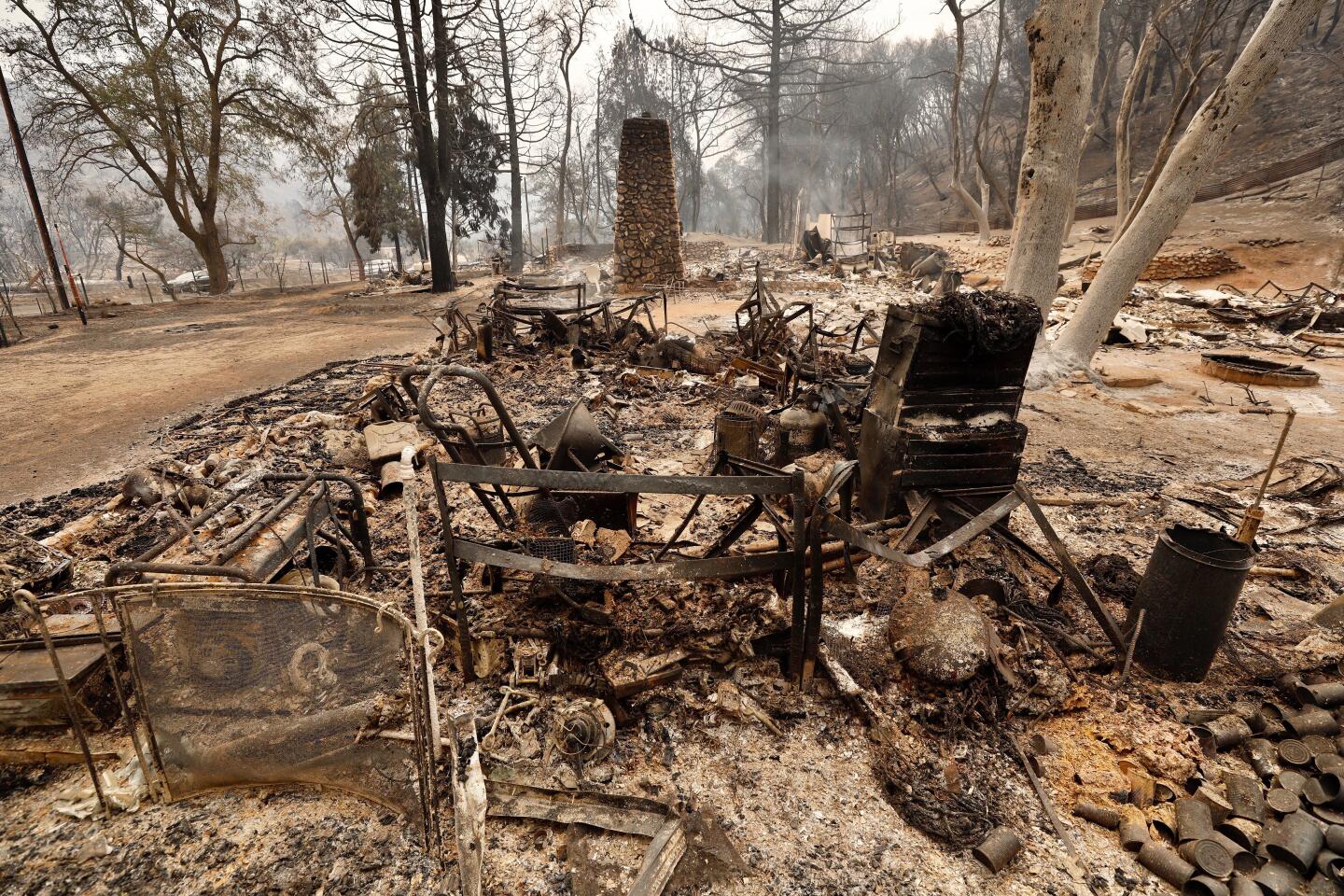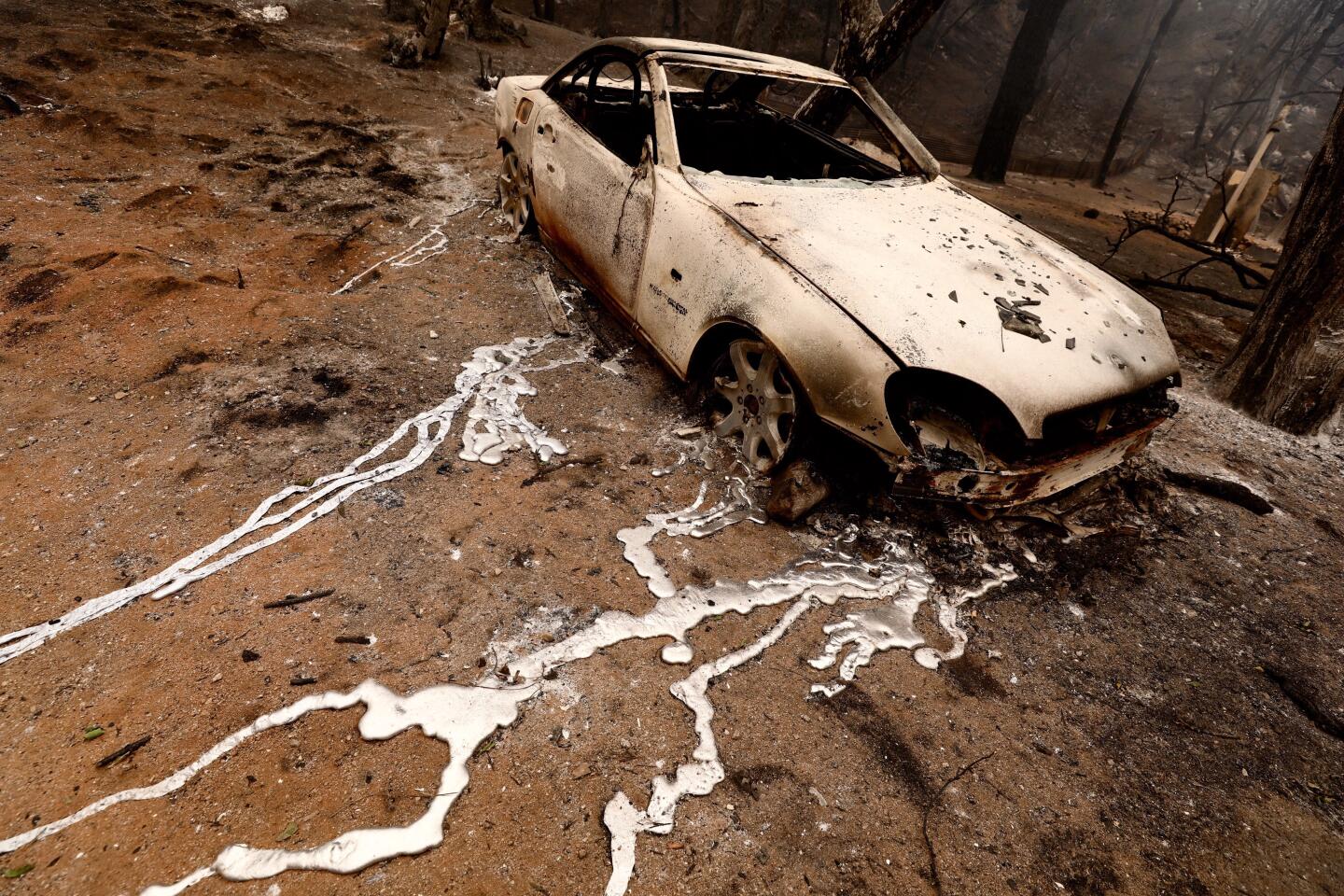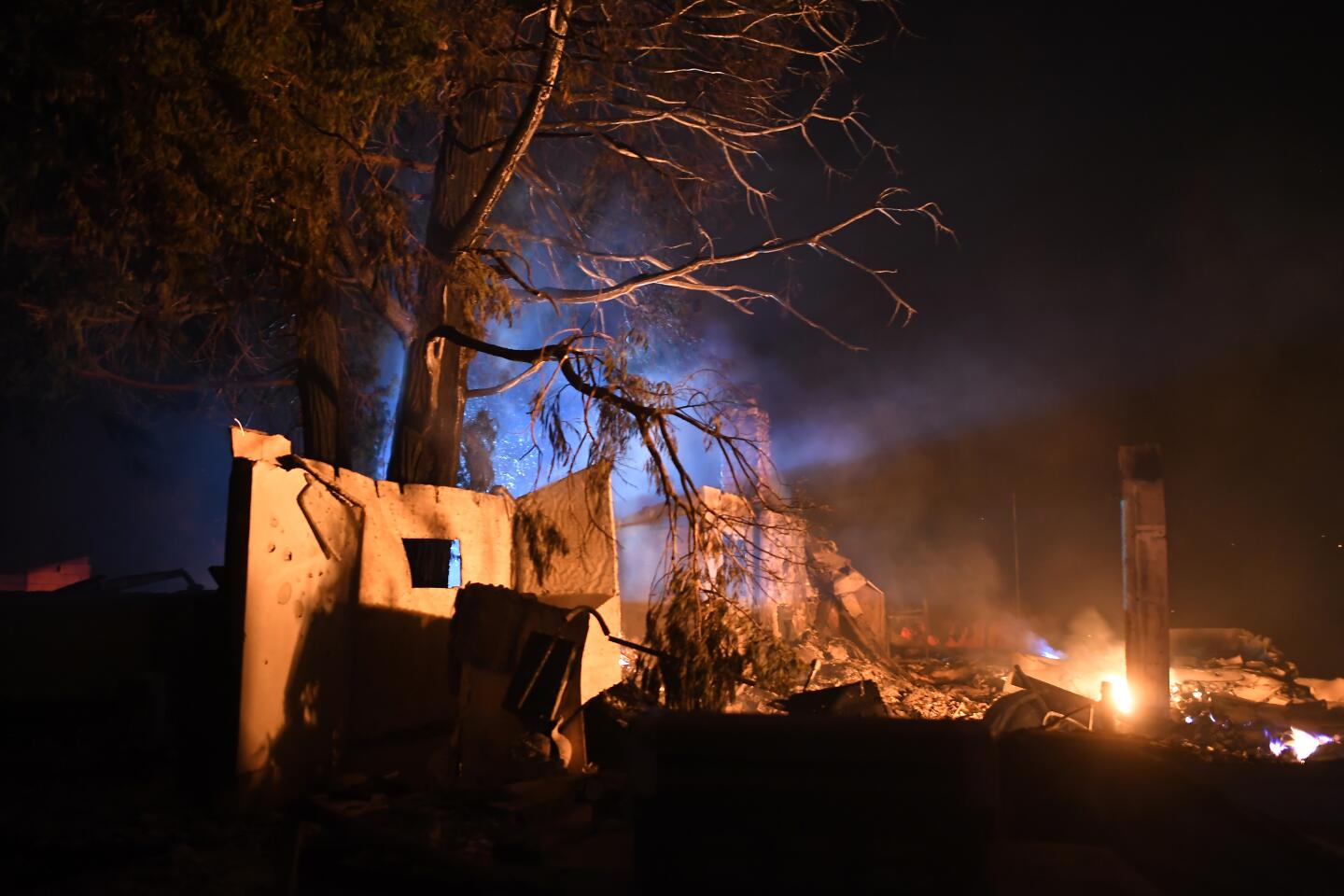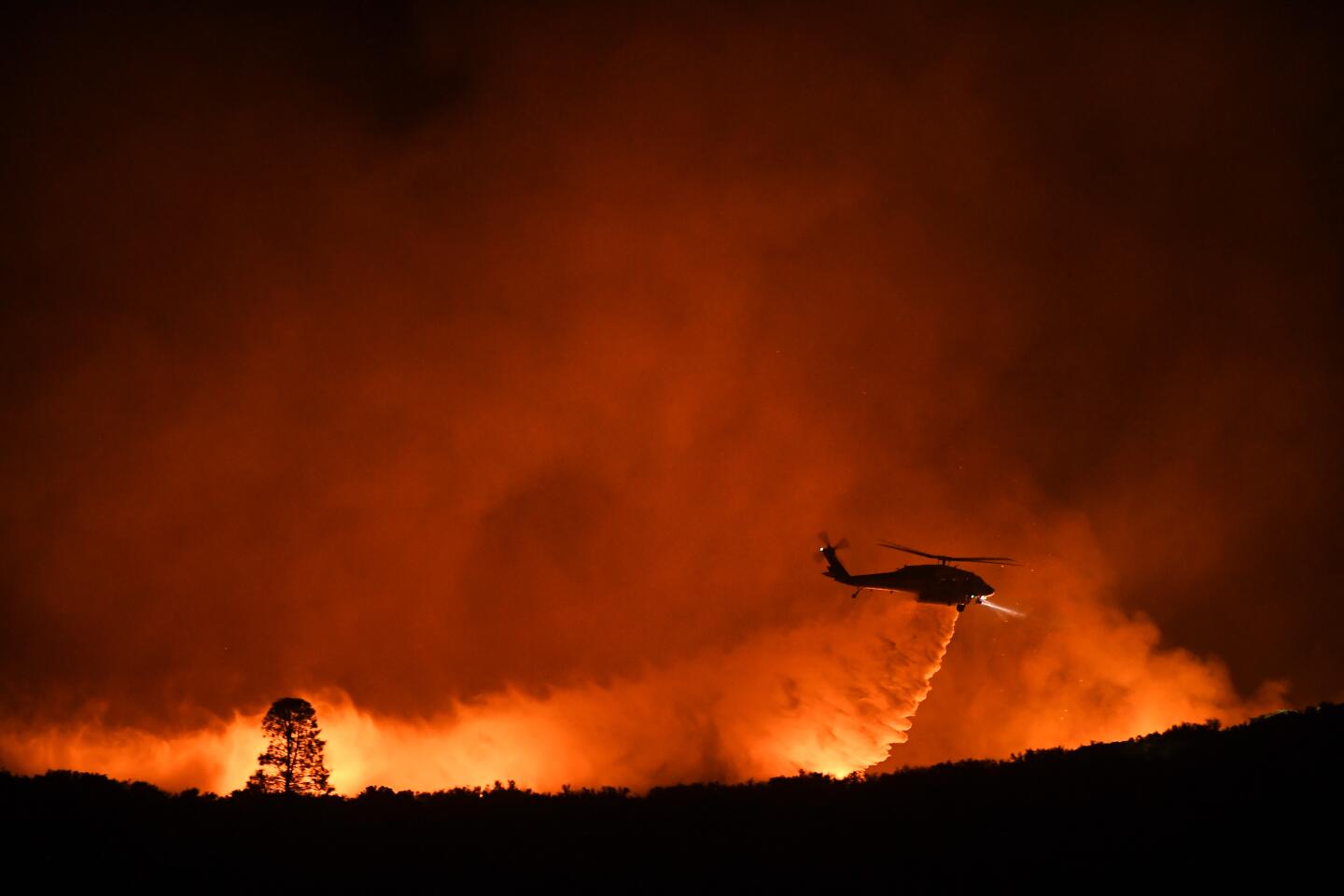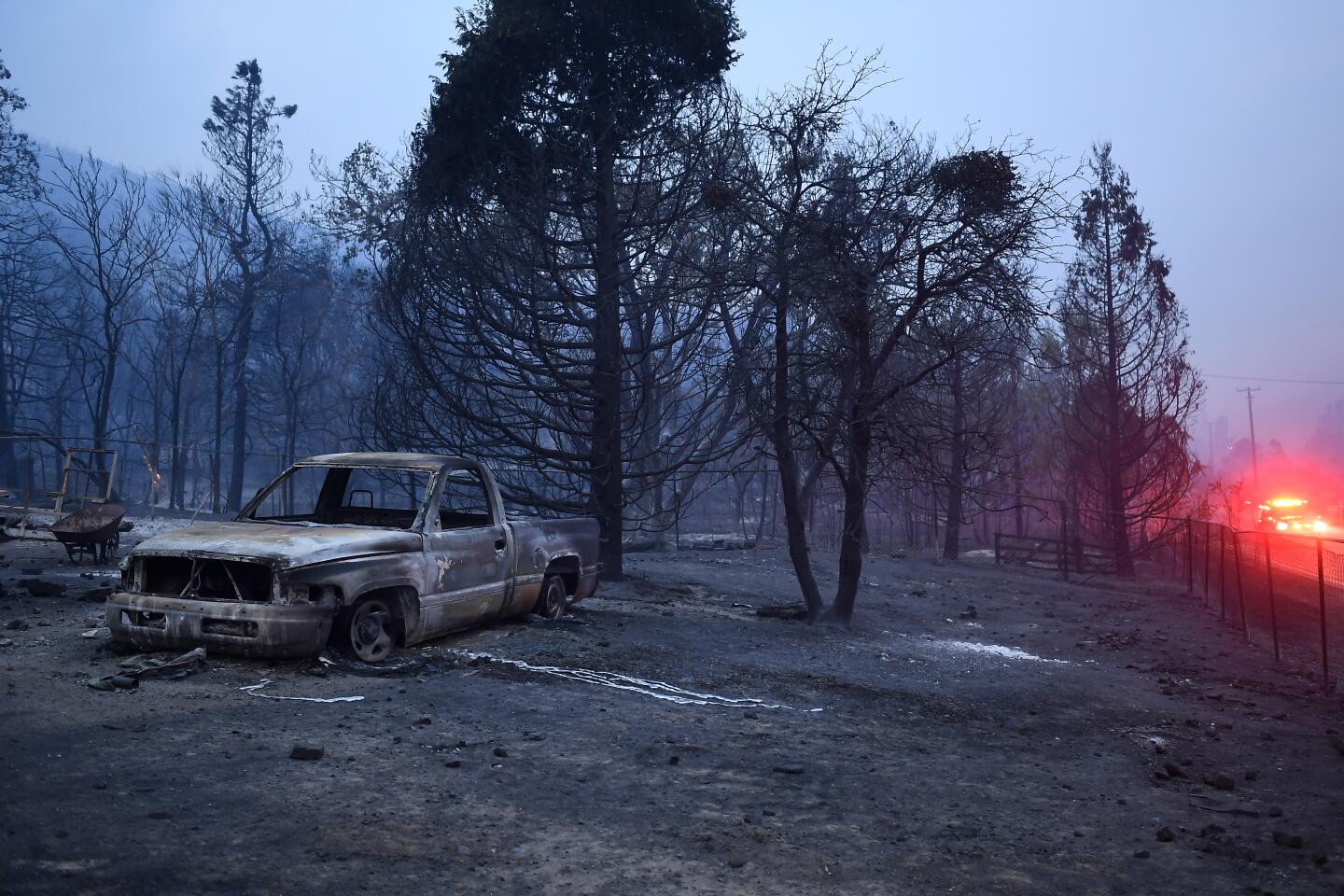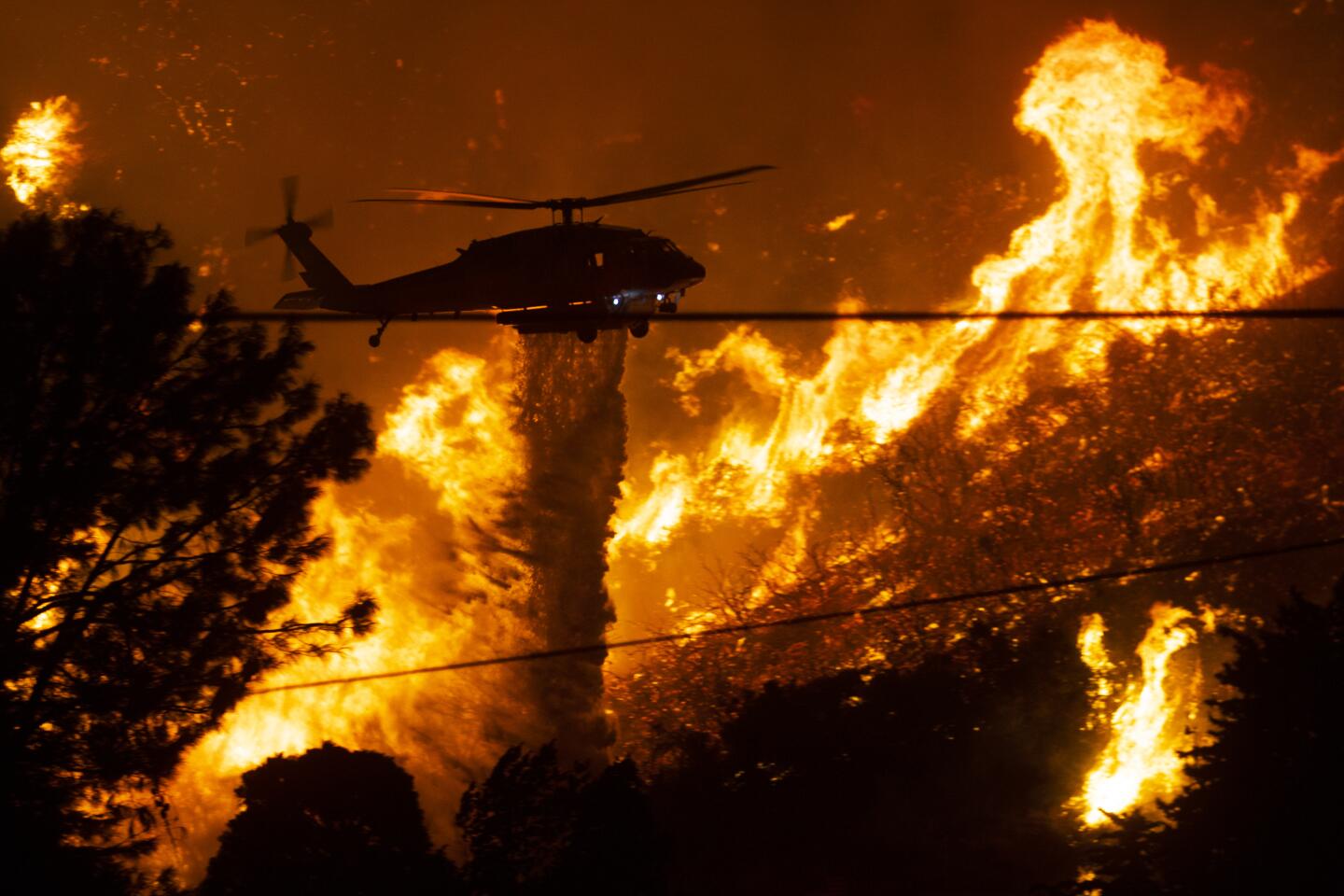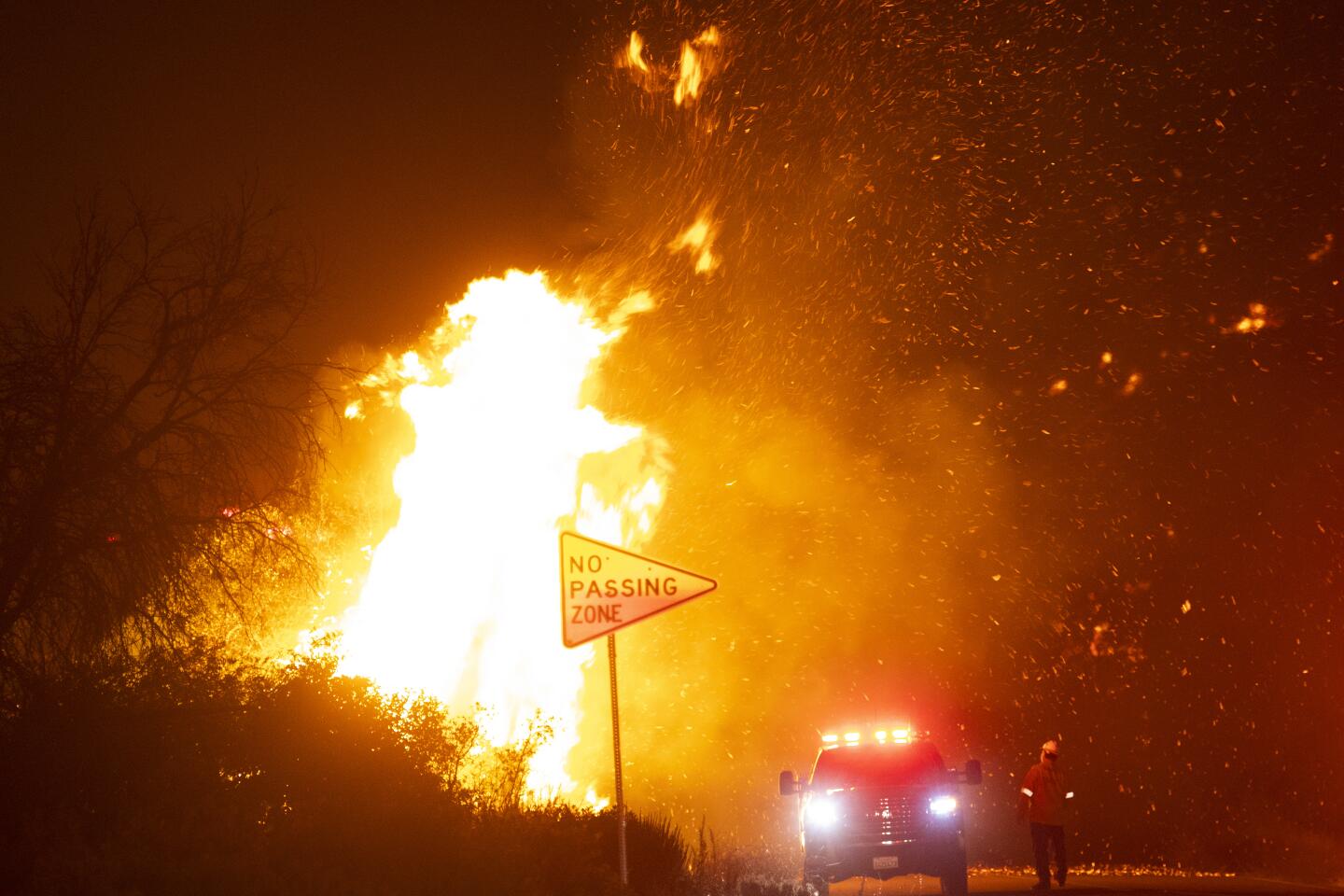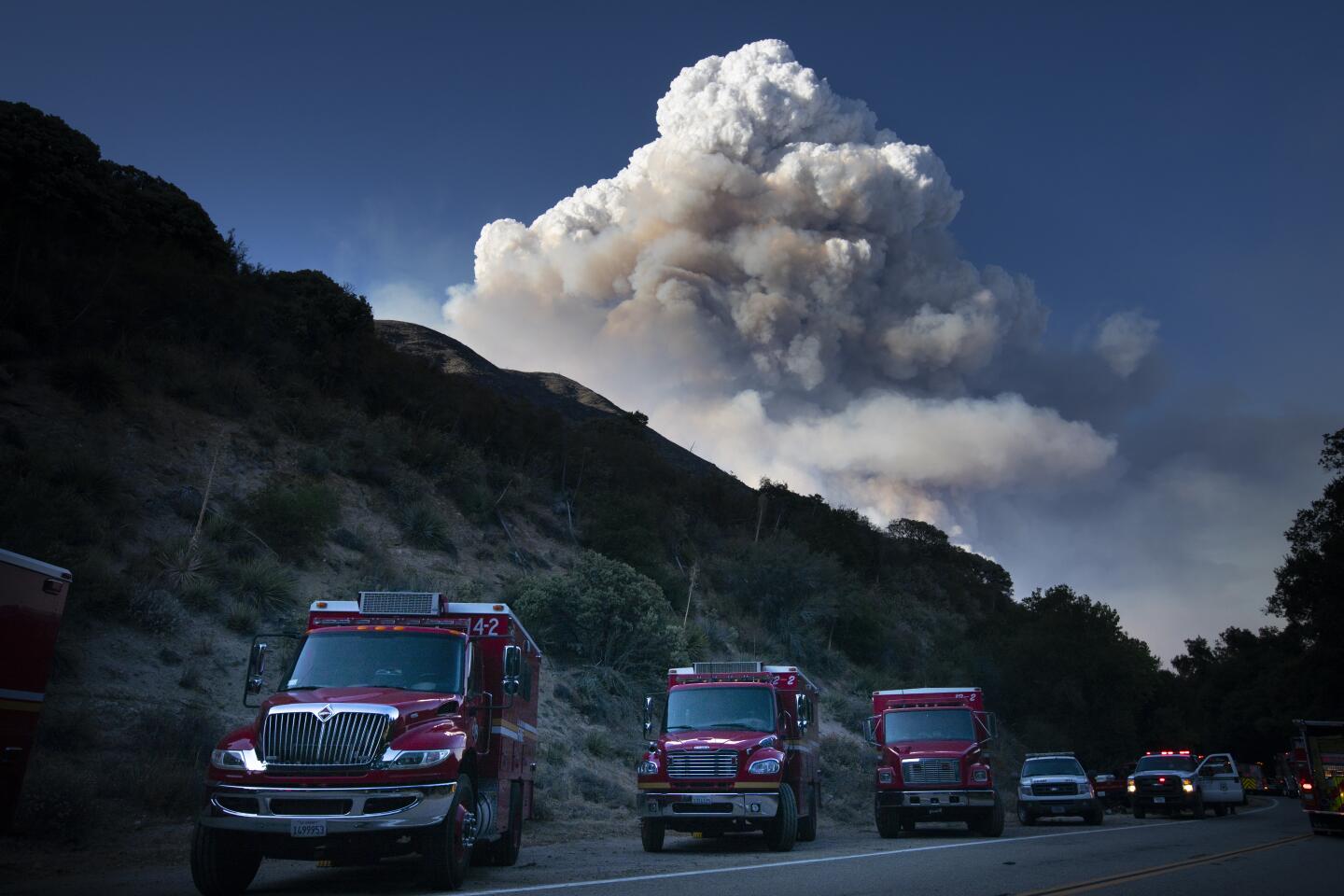From ‘firenadoes’ to record heat, California extreme weather a glimpse of future
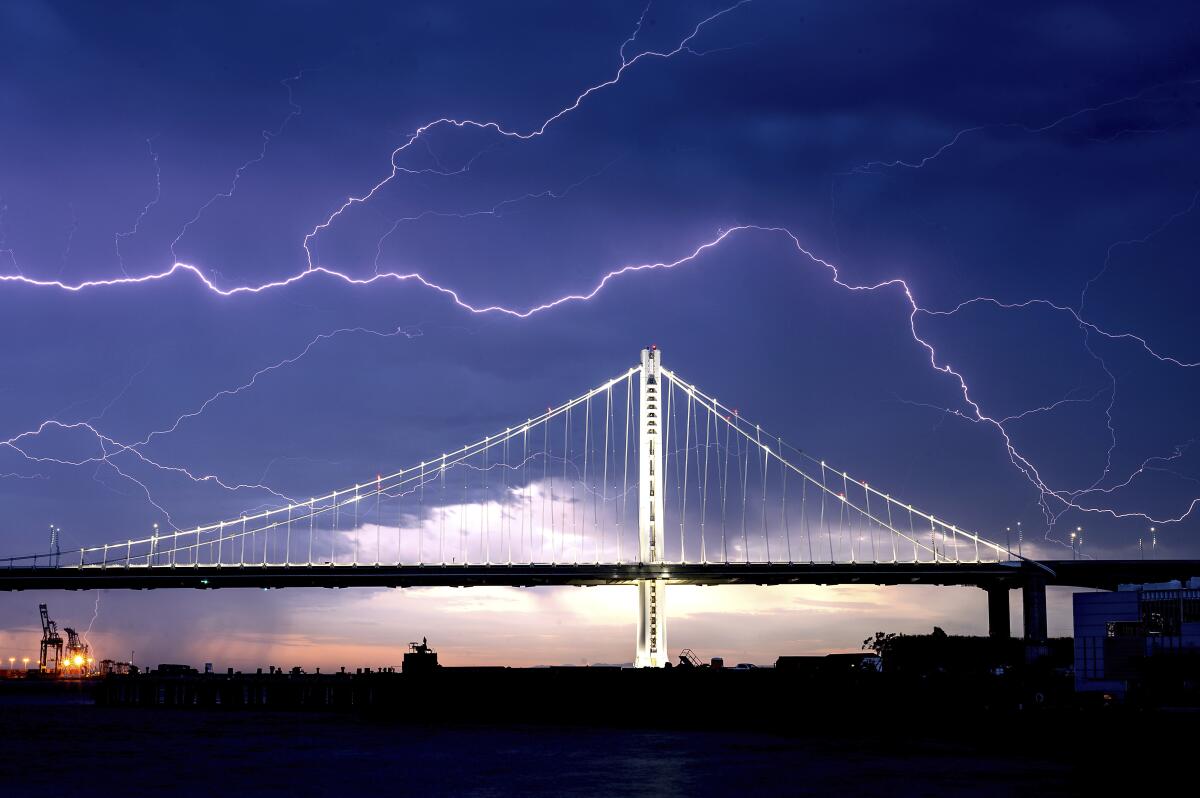
In the last few days, a moisture-laden heat wave has unleashed extreme weather in almost every corner of California.
In a single day, Northern California was hit with triple-digit temperatures, as well as hundreds of lightning strikes that ignited brush fires. The mercury hit 107 degrees Sunday in Santa Cruz, known for its moderate climate, and Death Valley reached 130 degrees — one of the hottest temperatures ever recorded there.
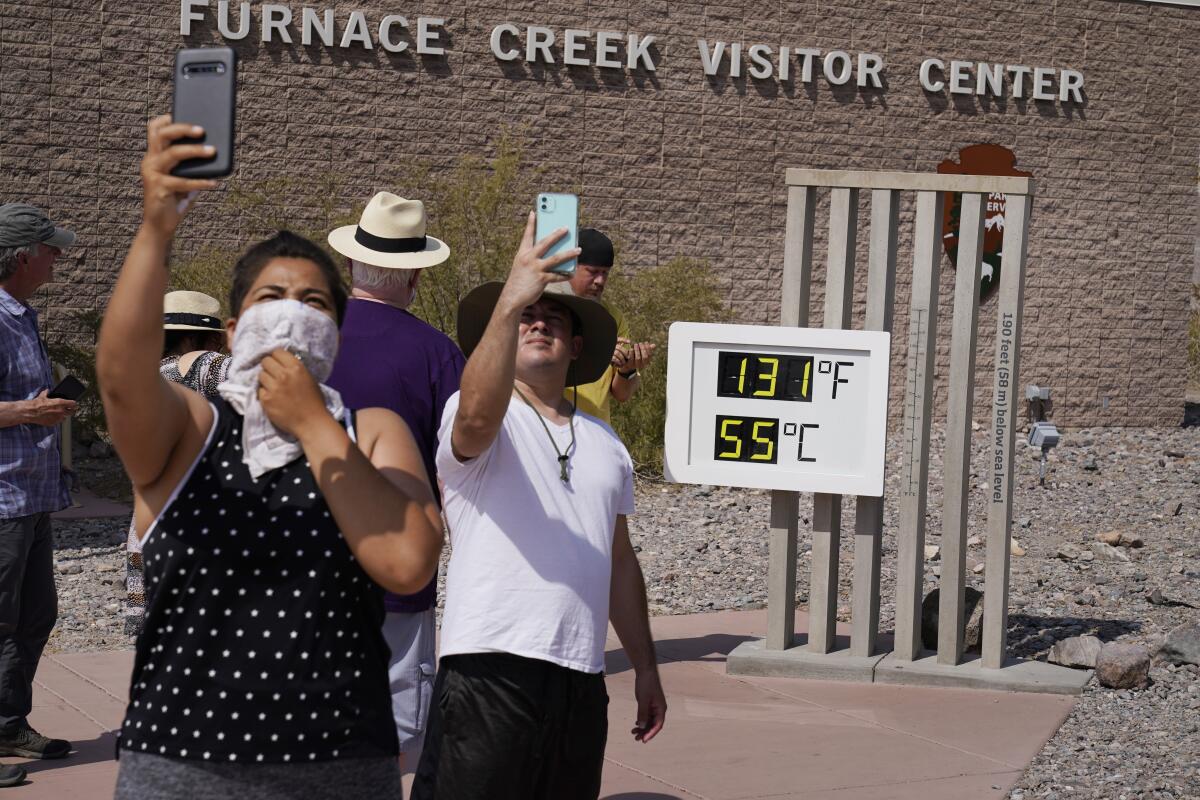
Meanwhile, unusually muggy air made Los Angeles feel like Houston, and warm nights failed to offer much relief. The Central Valley sweltered with temperatures exceeding 110 degrees. A fire-caused tornado touched down near the Sierra Nevada community of Loyalton. And a pyrocumulus cloud towered over Southern California, where heat and wildfires pushed smog levels higher than they’ve been in years.
Did we mention the power went out too?
As one of the worst heat waves in years continues to broil California, millions are experiencing the havoc that ensues with extreme weather that is growing more frequent with climate change. Warmer nights in particular have the imprint of global warming, scientists say, and offer a glimpse into California’s future as greenhouse gas emissions gradually heat the planet.
“Climate change is certainly increasing the frequency, severity and duration of extreme heat and warm nights,” said Flavio Lehner, a climate scientist at the National Center for Atmospheric Research. “It is safe to assume that climate change contributed to the extreme nature of recent events,” though only a dedicated study could attribute to what extent.
Medical experts, meanwhile, said they were extremely worried about the health risks posed by this heat wave because of its similarity to a July 2006 heat spell that resulted in thousands of emergency room visits for heat-related illness and hundreds of excess deaths. They are bracing for a jump in such heat casualties, which they fear will be worsened by the closure of air-conditioned public spaces due to coronavirus restrictions.
These recent weather events are the result of three separate meteorological phenomena combining in a way rarely seen in California, experts say.
The heat wave broiling the West — longer and harsher than is typical for August — was the first to arrive.
It is a high pressure system rotating clockwise over California, Nevada and Arizona that steered hot, dry desert air over the Golden State, breaking daily and monthly heat records across the Central Valley.
Then Tropical Storm Elida off the coast of Mexico began feeding the heat wave moisture, which created instability in the atmosphere. This moisture is why so many of the wildfires burning in California recently have created towering pyrocumulus clouds, said UCLA climate scientist Daniel Swain.
Finally, a thunderstorm some 1,100 miles south of the Bay Area in Sonora, Mexico, sent an invisible rippling wave of uplifting pressure north through the atmosphere, where it mixed with the heat and moisture to produce hundreds of lightning strikes across hundreds of miles of the Bay Area on Saturday and Sunday. That created dozens of fires, while farther inland a tornado formed.
National Weather Service meteorologist Evan LaGuardia lives in the Reno valley and said he could see a plume that would eventually spawn a fire-created tornado from his back window.
“It was just amazing that a fire can create something like this,” he said. “All the ingredients came together at the same time, the atmosphere was primed and ready to go,” he said.
At least 100 new fires began on Monday due to lightning, on top of others that began from the 1,500 or so lightning strikes that were spread across the Bay Area over the weekend, said Lucas Spelman, spokesman for the California Department of Forestry and Fire Protection.
Some of those lightning strikes may have created smoldering piles of timber and brush that’s just waiting for enough sunlight and heat to turn into an active fire that can grow away from prying eyes. An Angeles National Forest crew sent to Australia earlier this year had a similar fire spring back to life just recently.
“The brush is primed to burn; we know that there is huge potential there,” Spelman said.
In the Central Valley, Modesto, Stockton and Sacramento all broke their all-time heat records for the month of August this weekend, with each community reaching temperatures of 111, 112 and 113 degrees, respectively.
If temperatures do not dip into the 90s at all this week, Sacramento will be on pace to break its record of 11 consecutive days of triple-digit heat set in July 2006, Mueller said.
“It’s been very unusually hot for August, and even for the summer,” Mueller noted. “This heat wave will go down as the hottest, or at least one of the top heat waves, for the Sacramento area for all time.”
Those records likely will continue to topple in the coming years due to the warming effect of greenhouse gas emissions.
California has already warmed 1 to 2 degrees since the beginning of the 20th century as a result of the human-caused buildup of greenhouse gases, and according to a state science assessment, could see temperatures rise between 5.6 degrees and 8.8 degrees on average by 2100, depending on how much pollution humanity releases, and how quickly.
Greenhouse gases increase the chances of extreme heat by gradually warming baseline temperatures and pushing the bounds of possible weather.
So far in the 2000s in the United States, on average there are two daily record high maximum temperatures for every one daily record low minimum temperature, said Gerald Meehl, a senior scientist at the National Center for Atmospheric Research.
“This means with global warming, we experience more extreme heat, and this can be seen in the California heat wave,” he said. “As average temperatures continue to warm, we’ll see even more record high maximum temperatures and extreme heat.”
But the characteristics of this heat wave that are of greatest concern when it comes to human health are its long duration, high humidity and lack of nighttime cooling, said Helene Margolis, an associate professor of medicine at UC Davis Department of Internal Medicine.
“That means the built environment, such as homes, buildings and the street itself, are not able to let the heat go,” Margolis said. “So you have this cumulative heat gain over multiple days. And the entire environment becomes hotter and hotter, amplifying the risk. Because people basically can’t cool off.”
That lack of relief makes it harder for people’s bodies to recuperate overnight and increases the likelihood they will land in the hospital with heat stroke, dehydration and other ailments. Extreme heat also increases risk of complications for people with a spectrum of chronic illnesses including kidney disease, cardiovascular disease and diabetes.
Margolis and other health experts also expect this heat wave will be more dangerous because of restrictions in place to control the pandemic.
Heat disproportionately affects the elderly and people with preexisting health conditions — the same populations already at a higher risk of contracting the coronavirus. But with malls, libraries, movie theaters and other air-conditioned public spaces mostly closed, “they have less options for staying cool,” Margolis said.
“COVID-19 has caused them to be fearful of leaving their homes to take advantage of cooler environments, and there are fewer cooled environments to go to,” she added. “So the likelihood of heat exposure is greater, and the risk of heat-related health impacts will be amplified.”
Adding to health-related woes, air quality has also taken a dive. Wildfires and extreme heat generated smog readings that were the highest in Southern California in over a decade.
Hourly levels of ozone — the invisible gas in smog that triggers asthma and other health problems — reached 173 parts per billion, or ppb, in Redlands on Friday and 167 ppb Saturday in Glendora. One-hour average concentrations of ozone hadn’t gone above 163 ppb in the region since 2009, according to the South Coast Air Quality Management District.
Rolling blackouts and the threat of additional outages are also complicating people’s plans for coping with the heat.
Even in Death Valley there is no guarantee the power will remain uninterrupted to activate air conditioners if demand for electricity soars too high, said David Blacker, executive director of the Death Valley Historical Assn. and a resident of Death Valley National Park for 20 years.
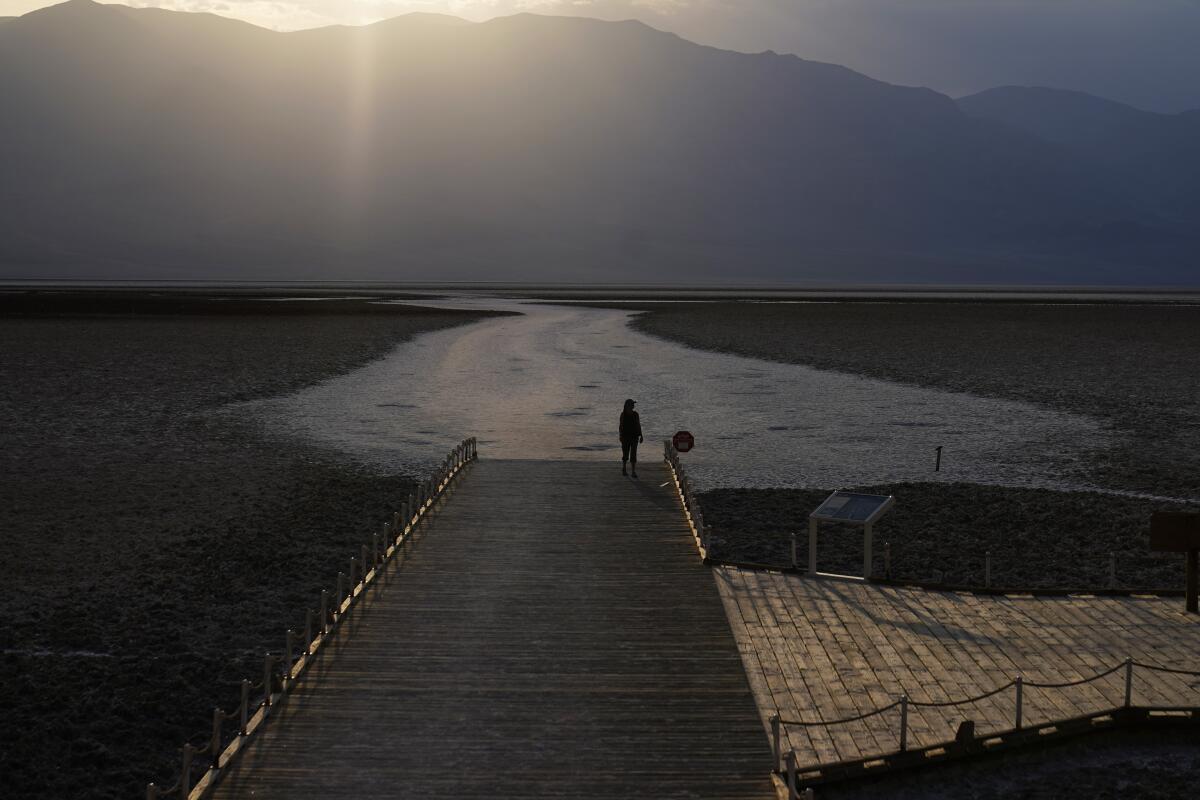
“You can tough out being in the hottest place on Earth for two consecutive days — provided you’ve got air conditioning,” Blacker said. “But this is the last place on Earth you want to be without proper and consistent power.”
”We’re looking at a forecast of about 120 degrees for the rest of the week — and 122 on Sunday,” he added. “When it’s this hot for that long, kids can’t play outdoors, adult tempers start getting shorter and there’s a lot of yelling at the TV when the news is on.”
Undeterred were heat-seeking vacationers from around the world, who on Monday flocked to the park’s headquarters in Furnace Creek, 190 feet below sea level, hoping to sweat through historic highs. Many of them gathered around a large digital thermometer prominently displayed at the entrance, posing for snapshots.
Park spokeswoman Brandi Stewart welcomed the attention, up to a point.
“But, honestly, people shouldn’t be jumping in their cars and heading to Death Valley to experience the broiling temperatures,” she said. “We are remote, and cellphone service is not available everywhere.”
Death Valley has contingency plans in the event of a power outage.
“In a worst-case scenario,” Stewart said, “evacuation is part of the plan.”
More to Read
Sign up for Essential California
The most important California stories and recommendations in your inbox every morning.
You may occasionally receive promotional content from the Los Angeles Times.
